Enrich Your Art – Play with Shapes!
This week it’s time to get inspired by shapes and start playing with them!
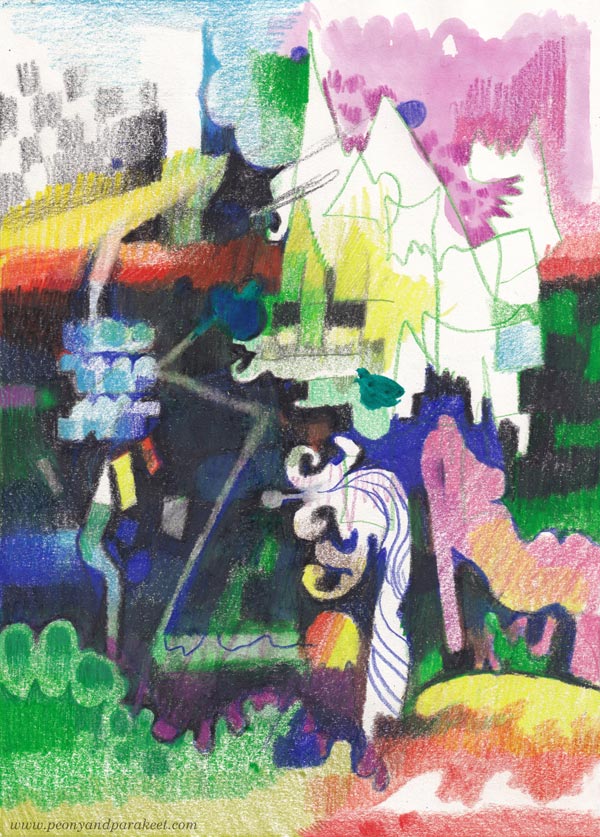
My dear reader, I guess you follow my blog because you love colors. And yes, isn’t it wonderful to choose, for example, a colored pencil from among several different colors: “Should I pick pink or red, hmm?“
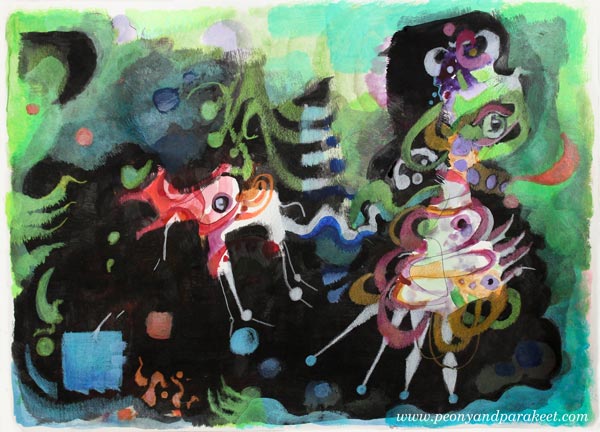
I have a degree in industrial design and maybe that has influenced me to think like this:
A color is a child. A form is a mother.
Colors take spurts freely on the paper while forms set limits. But you can play with form too!
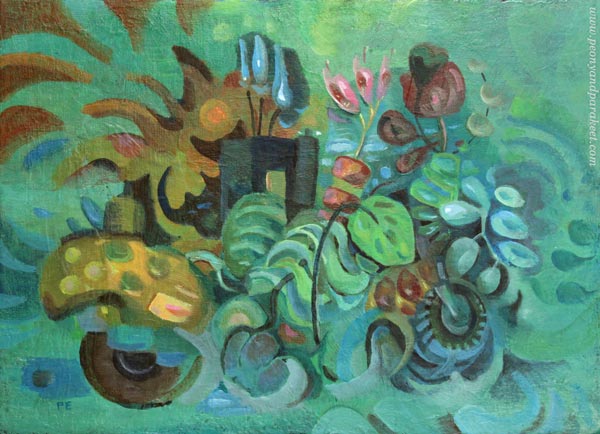
See more about making this in this blog post!
There is no need to turn the mother into an old woman who only sees the reality.
The soul of any shape is abstract and yet, even a simple shape has an expression. It’s fun to draw random shapes and then carefully alter them.
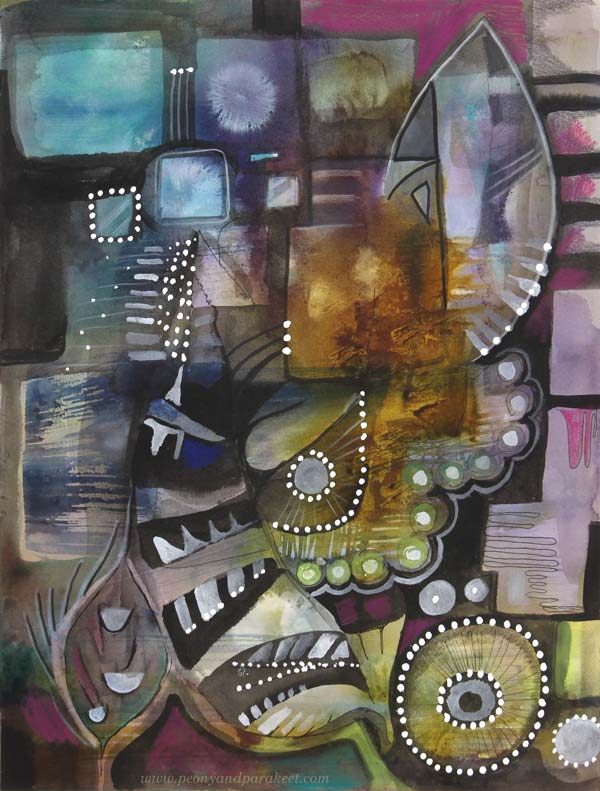
See more about making this in this blog post!
Shapes form a design language that you can constantly enrich. Don’t just draw isolated geometric shapes, but combine them to get more interesting ones!
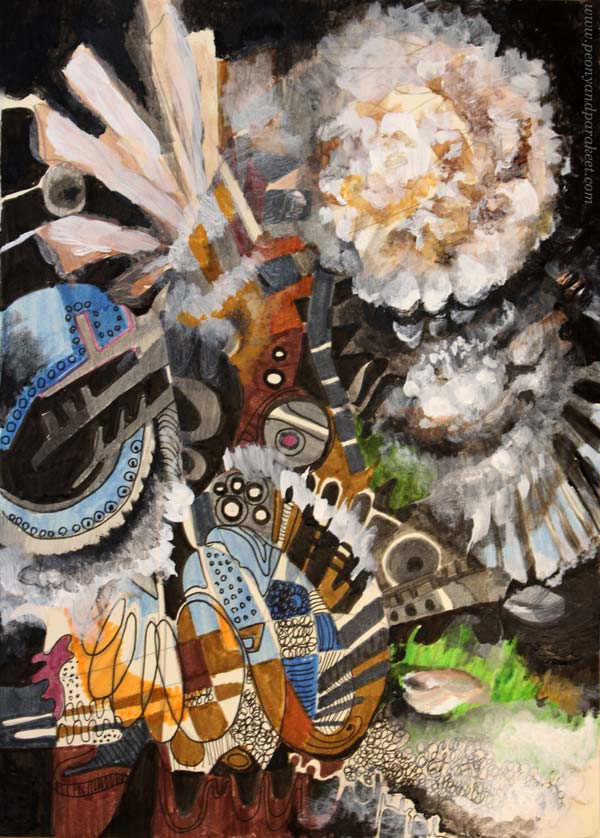
More about making this in this blog post!
When you have a shape on paper, give your full attention to it.
Art Play with Shapes
Talk to the shape! Interview it!
Don’t ask what she represents, but what kind of world she would like to create around herself.
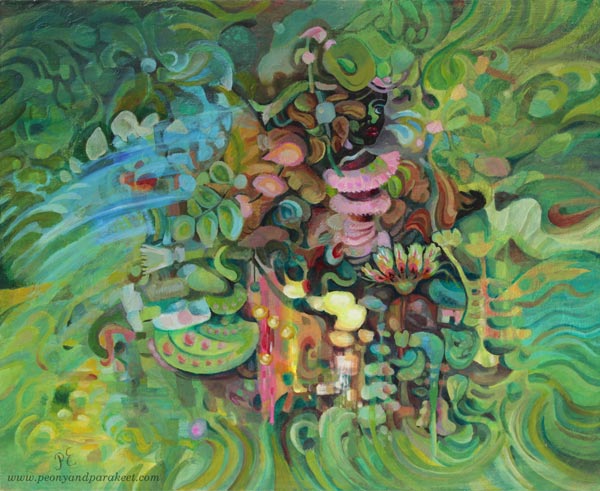
See more about making this in this blog post!
Ask where she belongs, and what kind of shapes she would like to meet.
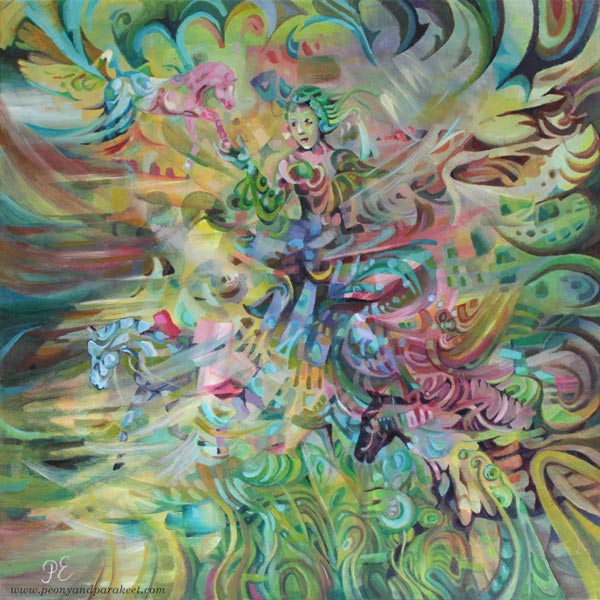
See more about making this in this blog post!
Shapes can take you to imaginative places where realistic and abstract meet. Once you have been traveling for some time, you will notice that the delicacy of art is in the form, and the color – the child – is there only as a spice.
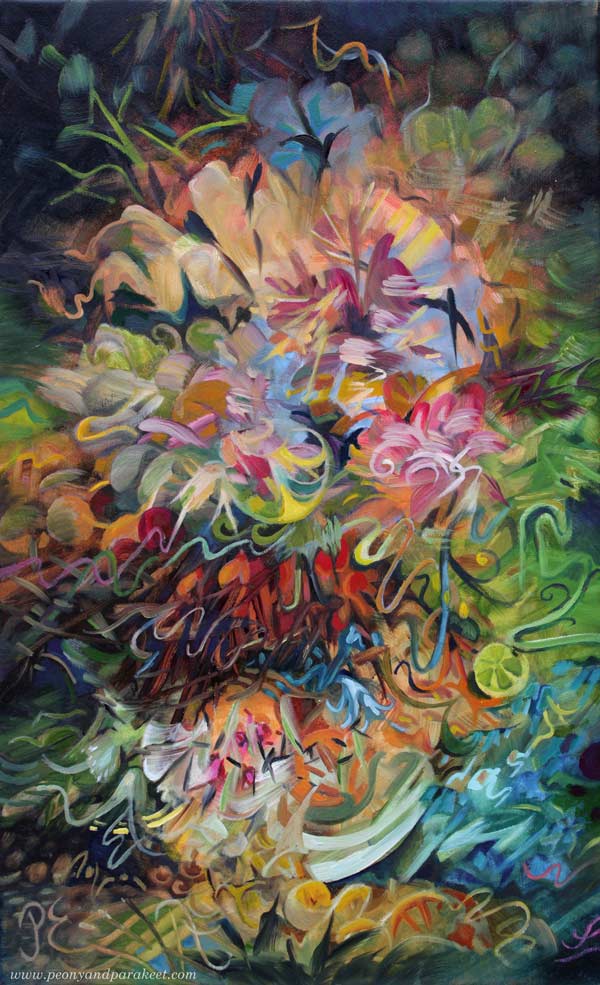
See more about making this in this blog post! – See more pics on the Finnish Art Store Taiko!
Art play with shapes – What are your thoughts? Tell us in the comments!
About Birds and Art
This week is about observing birds and bringing them into our art.
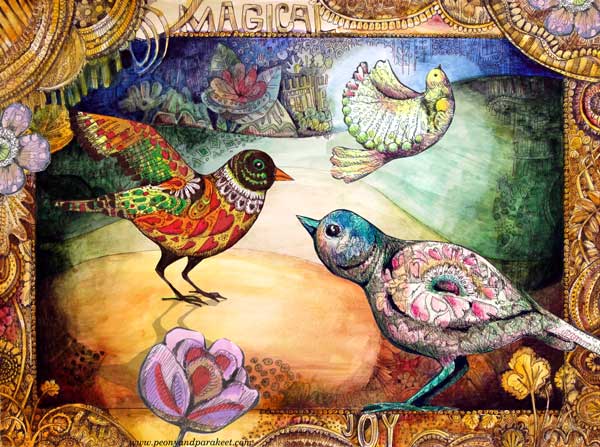
These are from my online classes Animal Inkdom and Magical Inkdom.
Let’s start with a lonely budgie.
Last fall, the same sight always awaited me in the mornings – a lonely budgie in a big cage. The door was open, and I turned on the full-spectrum bird lamp, but nothing cheered her up. Ever since Primavera’s husband Leonardo had died unexpectedly, her world had been empty, and even the best YouTube budgies couldn’t fill it.
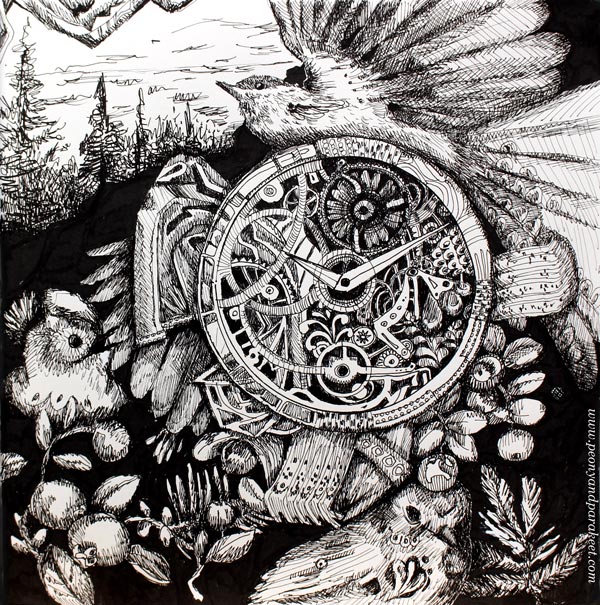
I have had budgies since 1991. My first budgie, Piuku, was also alone at first. Unlike 5-year-old Primavera, Piuku was a young bird. She adapted to being alone by taking me as her best friend. Later on, Piuku got other birds as companions.
Birds Bring Joy

The most enviable quality of birds is their ability to fly, but the more you get to know birds, the more you realize that their social life is very lively. A small flock of a few budgies can be like a soap opera. There will be arguments, gusts of affection, gossip, singing sessions, and all kinds of fun play. This way, the day flies by!
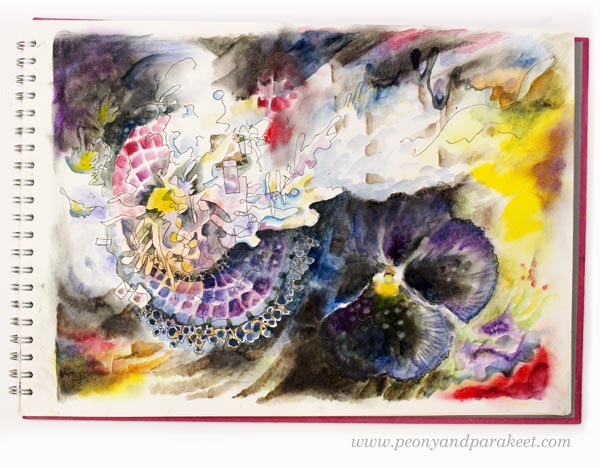
I have admired birds since swallows made their nest in the eaves of my childhood home. There were many other birds in the big yard too. I had bird books, and I dreamed about seeing kingfishers and other exotic birds.
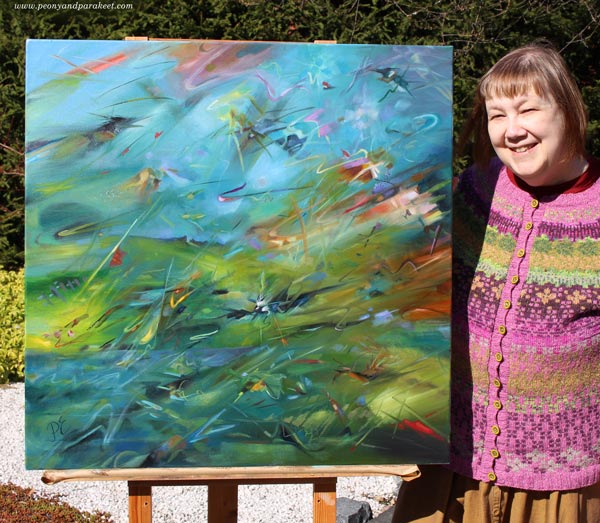
Similarly, as wild birds make you look up, pet birds bring lightness to the home. Their vocals are clear and the flight sounds lighten the atmosphere. It is as if the world is not only lying down but also up in the air.
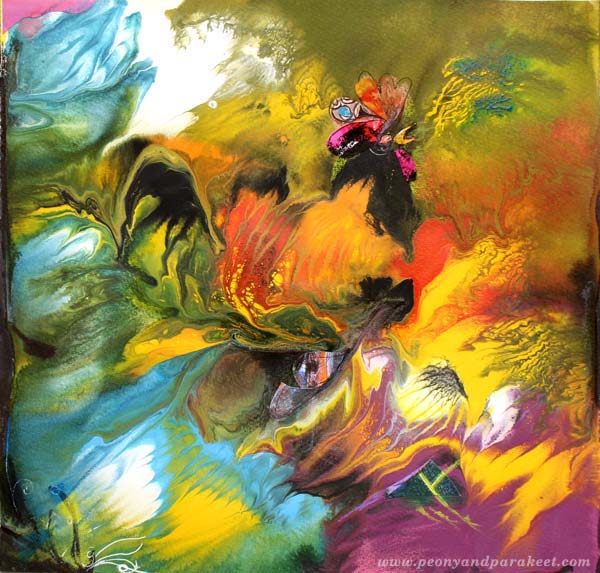
Birds and Flowers
At the beginning of my entrepreneurial career in 2008, I founded an Etsy shop to sell crafts and named it Kukkilintu.

Kukkilintu is a Karelian embroidered bird pattern that symbolizes happiness.
Karelia is a place in Eastern Finland, a part of it was lost in the war with Russia in 1940. I live in Southern Finland but was born in Northern Karelia.
Karelian people believed that the soul leaves the body in the form of a bird. Kukkilintu is a bit like the Finnish version of the peacock, which appears in the designs of other countries with the same meaning.
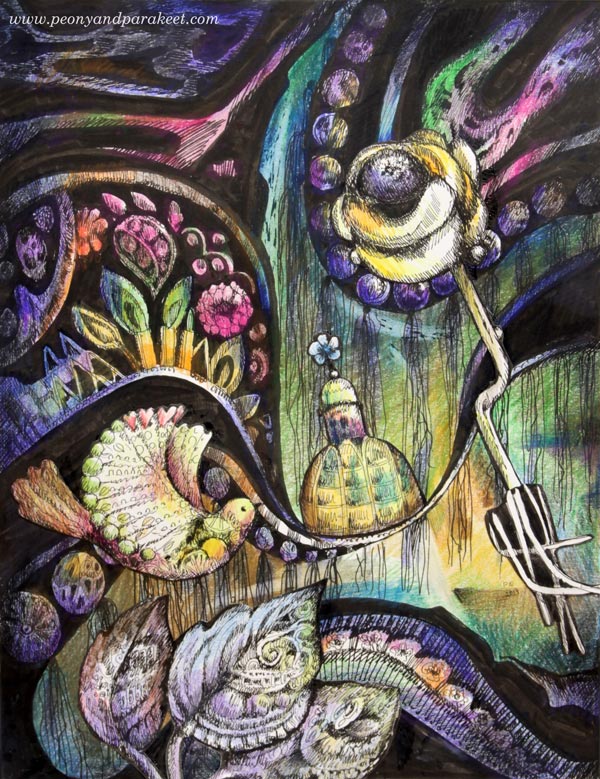
I thought the name “kukkilintu” was funny because it had the words “kukka” and “lintu” – “flower” and “bird.” When I was thinking about a name for my art blog a couple of years later in 2010, I thought that the flower could be a peony and the bird a budgie, so, a parakeet.

These two themes “flower” and “bird” have guided my creative process. I have wanted to learn the language of flowers and create beauty in the world, but also understand the life of birds and include their movement. Birds, flowers, and art belong together.
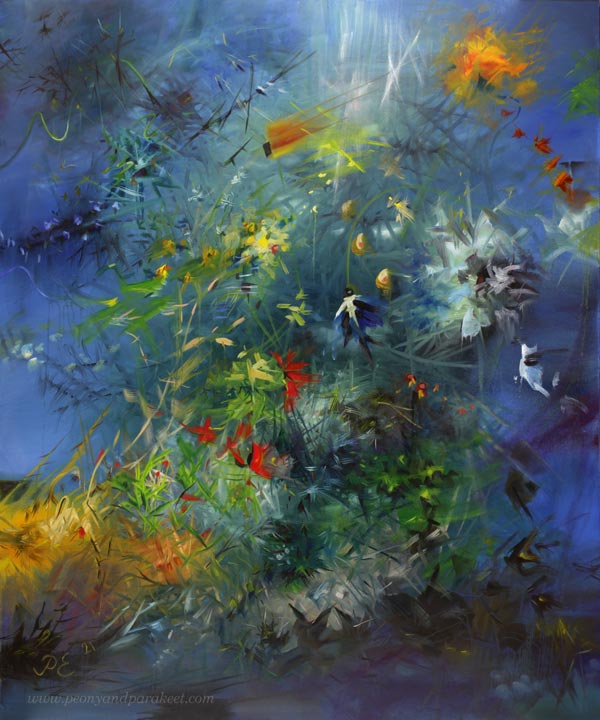
However, recently in my everyday life, it happened that the more I delved into the flowers, the more time they took away from the birds. I didn’t want to keep pet birds anymore, but felt that watching wild birds would be enough.
Magical Scene
Outdoors, one scene is above the rest – when a bird flies across the scenery. The bird then becomes kukkilintu – a flower bird. It takes over the landscape and erases all the sadness.

I came up with this when I was grieving the death of one of my dogs. Since then this very ordinary event has made me happy. It’s a message from the world that we always have inside of us, but that we don’t always remember, especially when we’re like a lonely budgie that has a hard time seeing ahead in life.
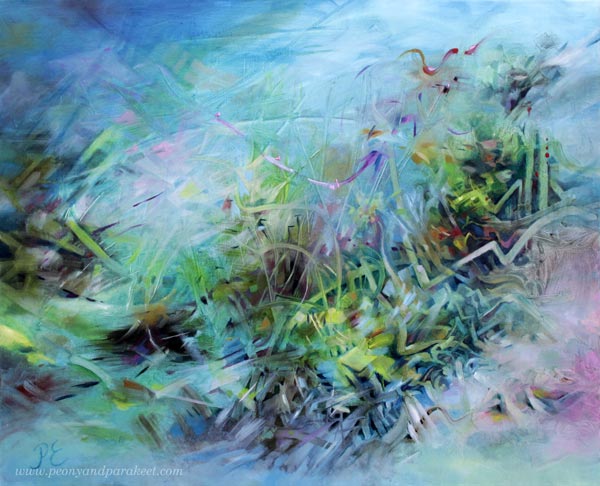
We must believe in our abilities, and happy endings as well. I found a new home for Primavera, where it has a spouse who was also widowed. I wish Primavera a long life. After all, it already has a long-lived name-sake, the famous painting by Botticelli born in the 15th century, which I have been to Florence to admire.
Do birds appear in your art?
Life After Death – Commissioned Art
This week, I have a commissioned art piece to show you. I have fewer words than I normally do – not only because the project is confidential, but also because this project went beyond words in many ways.

Last fall, I got a commission for this oil painting. It was ordered by a man in memory of his recently deceased spouse. We brought elements of the wife’s life and references to what she liked into the painting. The painting is, therefore, a secret portrait, from which loved ones recognize familiar things, but which do not need to be explained to strangers, unless they want to.
Commissioned Art – Sketch First
I started with a digital sketch. Here you can see the sketch and the final painting side by side.

I painted the sketch freely in the ProCreate app. The sketch is more abstract than the finished work and is more about the impression than the details.
Painting Process
After the sketch was approved, I ordered the canvas. The size of this piece is 50 x 40 cm (about 19.5 x 15.5 inches). Here are the first blurry layers.

I worked several sessions and let the painting dry for 1-2 weeks between the sessions.

The sketch helped with the painting process so that I could save my energy on the details.
Final Treatments
When the painting was finished, I photographed it outdoors. The natural light is wonderful now when Finland has a lot of snow, but the shoot had to be done quickly.

I varnished the painting with Gamvar after the photoshoot.

I like to think that varnishing was like giving a special blessing to the painting.
Spiritual Meaning
This project made my work as an artist feel even more meaningful than before. I learned more about what kind of artist I am.

I thought: “What could be a better assignment than building a bridge between life and death?”
What do you think?
Inspiring Art Journals
This week is dedicated to inspiring art journals that hopefully make you start creating right away.
Towards the end of last year, I started to really miss drawing. When I want to come up with ideas, I need a pen and paper! Or maybe I should say that I need my art journals because that’s where the ideas stay in good order.
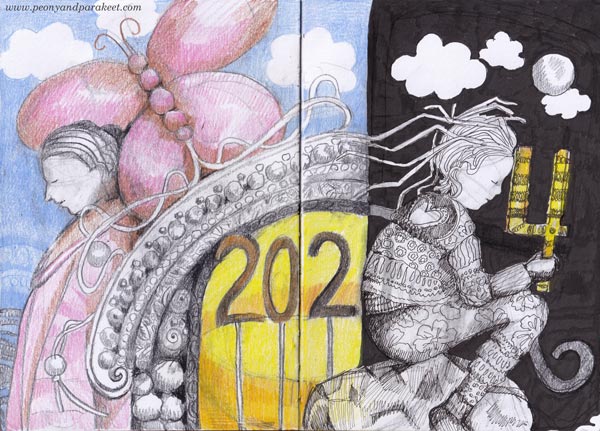
I made this spread in my colored pencil journal. 2023 is an old romantic woman that is going away and a young girl who is ready for adventure will take her place.
There are only a few pages after the previous year’s spread.

I hope to make more pages in this colored pencil journal this year.
Inspiring Art Journals
This week, I picked up random art journal books and browsed them. I especially love the one in the upper left corner with the black and white drawings the most.
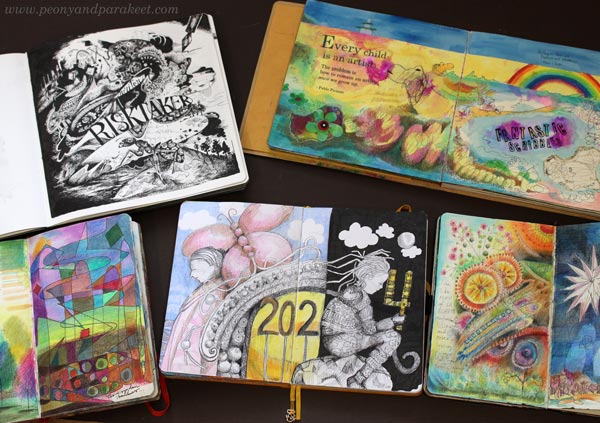
The drawings have no color but they are all full of ideas that still inspire me.
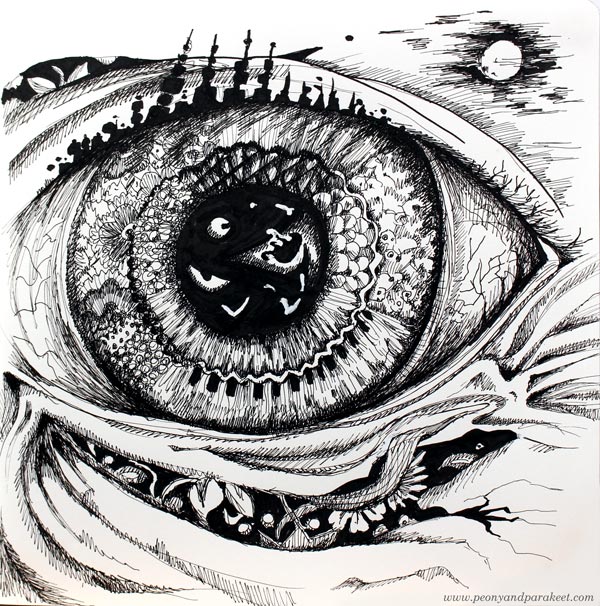
I now want to add ink drawings to my colored pencil journal as well.
Tiny Pages
Last year I bought a very small art journal. This is a pretty cute page!
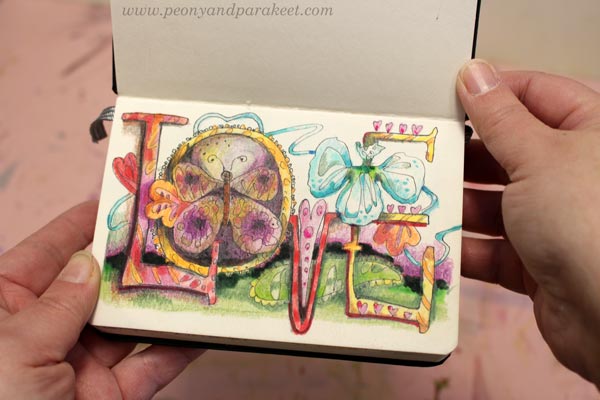
All the reds and pinks looked very nice together.
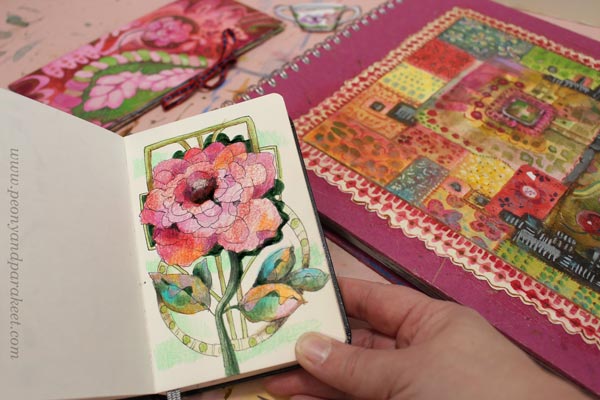
Years go by and my skills grow, but even the clumsiest covers still seem to fit with the new creations.
Doodler’s Resort
While browsing the journals, I found a spread with a transparent film in the middle. I had printed doodles on it and I still quite like the effect. This idea is from 2020, when the world stopped and I couldn’t do anything but mindless doodling.
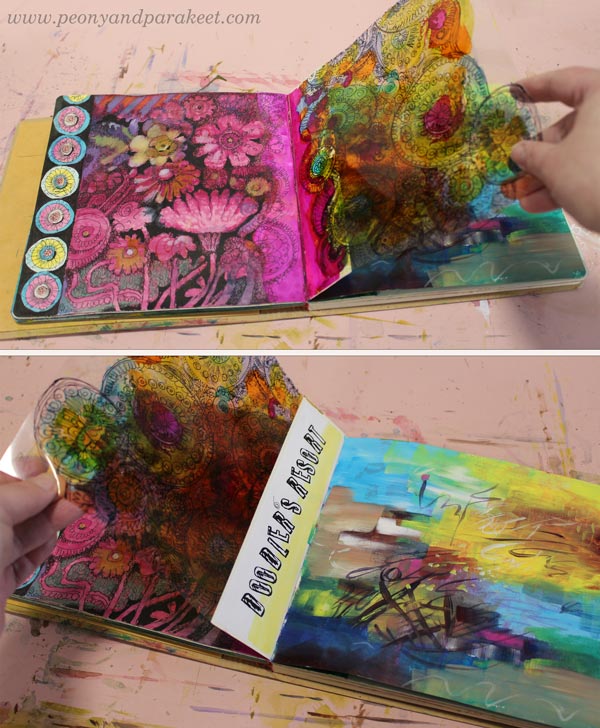
This art journal also has a lovely inside cover.
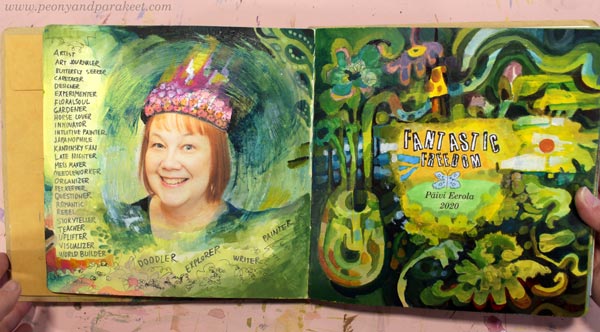
Divide the Content!
I don’t understand why it took so long before I realized that I could add annual pages, inside covers, chapters, and other pages telling about the content of the book in art journals.
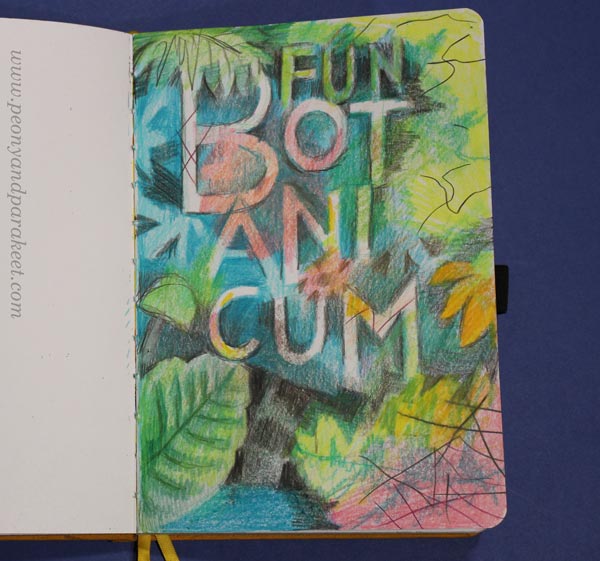
Nowadays, I have a course called Fun Botanicum, where you make a chapter cover, themed pages, and an end page in the middle of an art journal.
Inspiring Art Journals Tell About Time
It was fun to look at old art journals and wonder how these are connected to everything that is going on now.
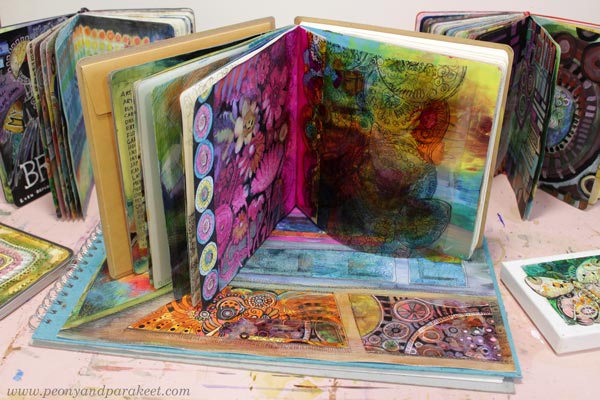
Time is a mysterious place. It is like an illuminated palace that blinds us. We can only walk away from it to the darkness. But as long as we are alive, we can start the adventure and get creative. “It takes a long time to become young,” said Pablo Picasso.
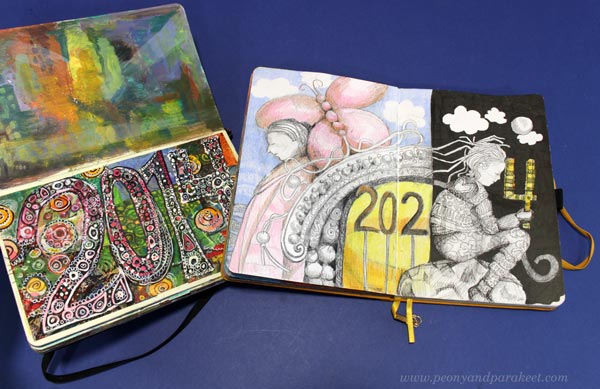
In my opinion, only by drawing can we know what we really think. The more you draw, the more your skills grow, and the more you will find out!
Do you agree?